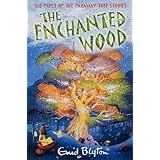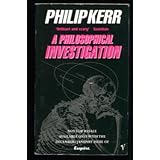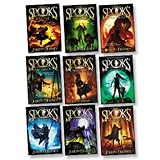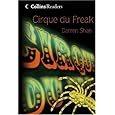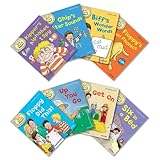Imagine if stories were written in this way. In this story I am going to write about a vampire that falls in love with a human girl. I will write it so that you think they get together and then they fall out, but I will then write about how they get together at the end. Thank you – I don’t need to read the rest of the book now.
I don’t know if students feel that teachers aren’t that bright or that we need constant reminders of things as we have so many things to do. Maybe this provides them with this need to regurgitate the purpose of the assessment so they have it clear in their head. News flash: I set the task; I know what you are going to write about, so I don’t need you to tell me what you are going to write about.
What do I expect an introduction to do?
·Grab the reader
·Entertain the person
·Persuades the reader that they have to
read the rest of the article
·Give a hint
about what the text is about
·Inform the reader of the direction
you are taking - agree / disagree
·Explain complex ideas
Quite a few English teachers across the land are preparing
students for the English Language exam in January, and I am one of those lucky
teachers. Like most of them, I have set the class a writing task to do and,
when I received it completed, I noticed the same thing: introductions that
don’t engage the reader. Introductions that don’t signal to an examiner that
these students are bright, clever people. This blog is about how I got them to
improve – ahh, I am doing it again.
FIRST IMPRESSIONS - The Lesson
The lesson started with a slide full of stills from famous
film openings. There were shots from James Bond films, Star Wars, Jaws, Harry
Potter and some other films. Students had to decide what the connection was. I
think I played the opening music to Star Wars too, just to release some stored
emotional memory linked to music. I could have cooked up some popcorn too to
focus on the memory linked to smell, but I thought that was a bit too much.
Anyway, they saw the idea of openings and how they were good
openings. Then I provided some examples to them. Now, these were not the best,
or even A grade quality, but they were openings that responded to the following
task:
Write a magazine article persuading teenagers of the dangers of
smoking.
Students had to grade each one and decide on what makes it
so good or bad, depending on the grade they awarded it.
1.
Cough. Cough. Sorry,
I am struggling to say this as – cough, cough – I find it difficult to talk as
I have had one lung removed due to cancer.
2.
Smoking is bad. It
is the cause of millions of deaths every year.
3.
I know you can’t
help it, but smoking is terrible and it makes you stink.
4.
£5000 is exactly how
much money you waste on smoking each year.
5.
I am going to teach
you about the dangers of smoking. In this article, I will give you the reasons
as to why you shouldn’t smoke.
6.
Imagine you are on a
date. Your date arrives. In the distance, they look gorgeous and worth the
hours it has taken you to get ready. As they get closer, you notice something –
a smell. The scent of an ashtray.
At this stage, I don’t go for the A* examples, as I find it
works better if you start with an achievable introduction for most and then build
up to the A* quality. However, I got some students that say ‘I am going to
teach you’ introduction is the best one, and then I probed this further and
found that students liked the directness of it. Eventually, we got to the point
about engaging the reader. Mostly,
students prefer the first and last one as they show a more creative approach.
Depending on the time, I might do some quick analysis of the lines. Which techniques
have been used?
LAST IMPRESSIONS
I then got students to look at some possible conclusions to
the same task.
1.
So, if you want to
be another statistic on a long and ever expanding list, then carry on smoking.
2.
Finally, the reasons
for not smoking are clear – it is bad; it causes cancer; it
stunts your growth; it costs a lot of money.
3.
Act now and stub it
out or expect to be ash quicker than you think.
4.
Smoking costs.
Smoking Smells. Smoking kills.
5.
To conclude, smoking
is very bad, so to save your life, do something now.
I repeated the activity I used before of ranking and analysing
lines, or I got students to match up the conclusions with the writers of the introductions. Which
writer wrote which conclusion? This makes for some interesting group or paired
work. We then recapped the features of a good introduction and conclusion. Hopefully, students come up with something like
this:
Conclusions:
·Make the reader think
·Leave a lasting thought or idea or question
·Try to make the reader remember
something about it
·Link to the opening in some way
Recently, when I did this activity with a class, the students
produced some excellent and creative approaches. I had students adopting a
voice, using lyrics from a song, creating a call-to-arms war speech, writing a
response to a Daily Mail letter and many more. Now, I could have taught
students to do this, yet I don’t think it would have really stretched their
creativity and playfulness. I loved the problem solving aspect of this kind of
writing. How can I make this ‘dull as dish water’ writing task engaging and
creative? Some get it quickly; others get it when they see the photocopied
examples. And, failing that, they can adopt some of the approaches used in the
examples. After all, all the best writers beg, steal or borrow.
Gifted and Talent
Students
To step up the writing to a higher level, I focus on parody.
Usually, I show an example from ‘The Simpsons’ to give students the idea of what
parody is and the overall effect of its use. Then, I play a nice little game of
'name the source of a quote'. Obviously, this works best with top sets, but I
have adapted it for other sets too by using song titles. I find that the A*
students need to demonstrate a much wider understand of texts and the world
around them than their peers.
Using
parody in your writing to get an A*
It is a truth
universally acknowledged, that a bright student in possession of wit and a pen
must be in want of an A*.
Line
|
Who? What? Where?
|
|
1
|
It was the best
of times, it was the worst of times, it was the age of wisdom, it was the age
of foolishness.
|
|
2
|
It is a truth universally acknowledged,
that a single man in possession of a good fortune must be in want of a wife.
Jane Austen.
|
|
3
|
One small step for man, one giant leap for
mankind.
|
|
4
|
I have a dream
that my four children will one day live in a nation where they will not be
judged by the colour of their skin but by the content of their character.
|
|
5
|
I know I have but
the body of a weak and feeble woman; but I have the heart of a king, and of a
king of
|
|
6
|
I stand before
you today, the representative of a family in grief, in a country in mourning,
before a world in shock.
|
|
7
|
Blessed are the
meek: for they shall inherit the earth.
|
|
8
|
We shall fight on
the beaches, we shall fight on the landing grounds, we shall fight in the
fields and in the streets, we shall fight in the hills; we shall never
surrender.
|
|
9
|
Let us therefore
brace ourselves to our duties, and so bear ourselves that, if the
|
|
10
|
The quality of
mercy is not strain'd,
It droppeth as the gentle rain from heaven Upon the place beneath: it is twice blest. |
|
11
|
In the beginning God created
the heaven and the earth.
And the earth was without form, and void; and darkness was upon the face of the deep. And the Spirit of God moved upon the face of the waters. And God said, Let there be light: and there was light. |
|
12
|
Shall I compare thee to a
summer’s day?
|
|
13
|
To be, or not to
be: that is the question
|
|
14
|
Friends, Romans,
countrymen, lend me your ears; I come to bury Caesar, not to praise him
|
|
15
|
Hey diddle diddle, the cat and the fiddle,
The cow jumped over the moon. The little dog laughed to see such fun And the dish ran away with the spoon! |
|
16
|
And
so, my fellow Americans: ask not what your country can do for you - ask what
you can do for your country.
|
Students then attempt to use one of these famous quotes in
their writing for comic effect. It is quite a challenging task, but I think it
adds something original to their writing that separates them from other
students.
As an extension task, I get the class to suggest some new
quotes to add to this list. Or, I get them to write down as many as they can
remember from the sheet.
Finally…
This week I applied for the ‘Coordinator of Literacy Across
the Curriculum ’ role and I was faced with writing an application letter. That opening sentence stumped me. Do I go for
the clichéd ‘In this letter I am writing…’ or do I go for something creative
and original? What do you think I did? I went for the safe option and presented
myself in the traditional manner, and it pained me. I so wanted to be creative:
Dear Headteacher,
I know I have but the body of a weak and feeble male; but I
have the heart of a giant and I am a giant of Literacy too...
Only time will tell if playing the safe option worked. However,
if I was writing for an examiner, I would be sure to be creative. I would want
to be remembered as the breath of fresh air in a pile of predictable and
mundane writing. I’d want to be the one remembered for putting a smile on the
examiner’s face. I’d want to be the one that impressed the examiner. Failing
all that, I just want to be the one he remembers.
Thanks
Xris32

